Today's Notables
My Observations of Italy, Part 2
November 2007
Hisashi Furuichi
President and C.E.O.
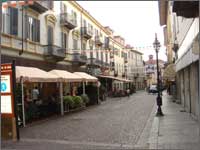
The next day, we started off early in the morning to our destination
of Bra. Bra is small community about 60km south of Turin and is
engaged primarily in agriculture and dairy farming. In the past,
Turin used to be synonymous with Fiat because it became famous as
the center for Fiat Group; but lately, Turin and Bra are becoming
known for "slow food."
For those outside of the food industry, "slow food" probably
means nothing. However, when a McDonald's first opened its doors
in the later half in the 1980s in the famed Piazza di Spagna in
Rome, Italy, an editor of a gourmet magazine suggested that Italian food
was about to become bastardized by fast food and proceeded to establish
a gourmet association. This group gradually developed into what
is now called the Slow Food Association and has become known worldwide
for its activities.
As the words themselves suggest, "slow"
is opposite of "fast" particularly when it comes to high-value
foods such as cheese, wine and prosciutto which require aging instead
of mass produced food or agricultural products with an emphasis
on efficiency of production. Slow Food's activities are centered
on bringing people back to the high quality of the old, time-honored
traditions in food production and small scale agricultural production.
The Slow Food Association was a major force in establishing the
now famous graduate school, University of Gastronomic Sciences.
The purpose of our tour of the school was to study the curriculum
and purpose of courses and compare them to similar educational institutions
in the US.
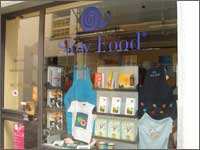 |
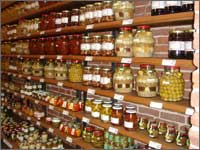 |
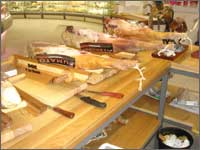 |
The school is located outside of Bra city center at what was an old
dairy processing plant. At some point, the Piemonte Regione government,
which owned the land and the buildings, donated the property the
University of Gastronomic Sciences. Following its initial establishment,
over 120 major Italian food manufacture corporations in wine, coffee,
pasta and cheese sponsored the University. One unique feature of
the University is that students must select a slow food such as
wine or cheese as their course of study when they enter the University.
Their studies then address everything from the history of cuisine,
origin, nutritional value, logistics, marketing, communication and
merchandizing with regard to their area of study.
Students also work in the production of their respective
area of study for many weeks to learn hands-on production techniques.
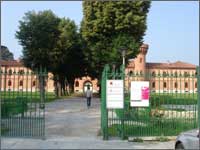 |
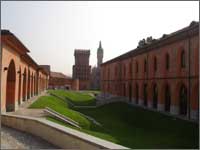 |
The University of Gastronomic Sciences, being closer to the basics
in food science, is really upstream compared to the school I attended,
the Culinary Institute of America, which is farther downstream because
it concentrates on food as it is served and eaten. Although the
Culinary Institute of America does teach true fundamentals, it is
more concerned with preparation of ingredients for the best taste
as opposed to the ingredients themselves, and how food service fits
in the hospitality business as a whole.
Recently here in Japan, there have been instances of misrepresentation
of ingredients on food packaging and inappropriate expiration dates
which is indicative that the educational system in food sciences
in Japan is lacking.
Culinary schools have clung to the past with curriculums that have changed
little in many decades.
Many schools make the mistake of thinking that they can survive in the face of
a dearth of students by making it easy for them to graduate,
and instructors are disinterested in researching the current situation
in the food industry.
Logistics, merchandizing, marketing and management in the world of food industry
are always changing but there is no place to learn the fundamentals of the food
business that provides the backdrop to these changes.
If it such a school were to be developed in Japan, the emphasis may be very different.
What was very striking this time was the shear breadth of cuisine being studied.
In food industry in Japan, sales at super markets and other stores that
sell prepared food, and the market for take-out and other similar
ingredients like prepared lunches has increase dramatically and
if you add all other food service sales, the market is huge at about
80 trillion yen per year.
Each area of food industry requires special knowledge and preparation techniques.
It is clearly time for Japan
to establish a school that delivers a comprehensive, scientific
food industry curriculum instead of relying on learning by watching
or copying. I hope that I may do whatever possible within my power
to help in establishing Japan's first "University of Cuisine" in Osaka.
HOME > What’s New > Today's Notables > Details














